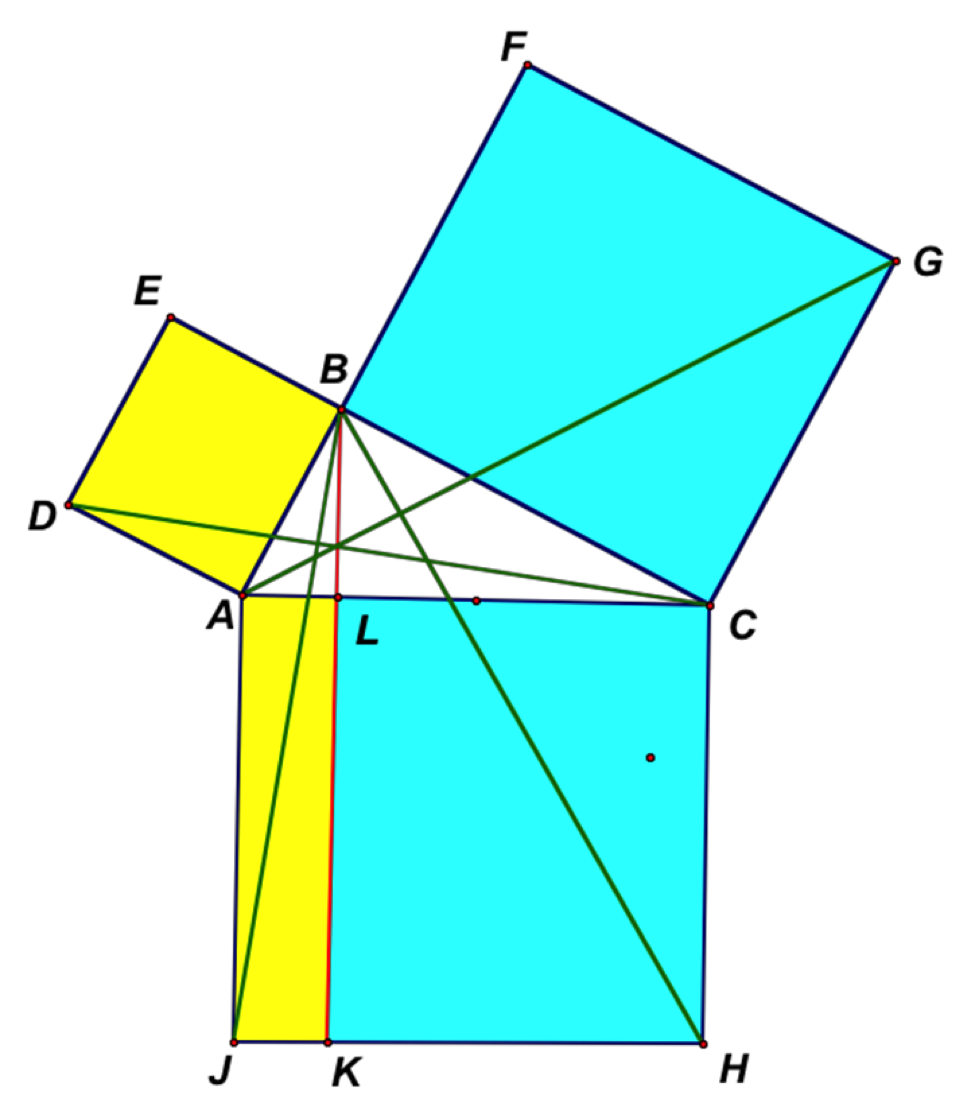- About MAA
- Membership
- MAA Publications
- Periodicals
- Blogs
- MAA Book Series
- MAA Press (an imprint of the AMS)
- MAA Notes
- MAA Reviews
- Mathematical Communication
- Information for Libraries
- Author Resources
- Advertise with MAA
- Meetings
- Competitions
- Programs
- Communities
- MAA Sections
- SIGMAA
- MAA Connect
- Students
- MAA Awards
- Awards Booklets
- Writing Awards
- Teaching Awards
- Service Awards
- Research Awards
- Lecture Awards
- Putnam Competition Individual and Team Winners
- D. E. Shaw Group AMC 8 Awards & Certificates
- Maryam Mirzakhani AMC 10 A Awards & Certificates
- Two Sigma AMC 10 B Awards & Certificates
- Jane Street AMC 12 A Awards & Certificates
- Akamai AMC 12 B Awards & Certificates
- High School Teachers
- News
You are here
Pythagorean Cuts – Euclid's Proof
Before exploring adaptations of Euclid’s strategy to figures other than squares, let's recall his proof. We repeat Figure 1 for convenience.

Figure 1 (repeated from the preceding page): The Theorem of Pythagoras from Euclid's Elements with the "Pythagorean cut," line segment LK, shown in red.
Euclid showed how to partition the largest square in Figure 1, above, into two rectangles so that each rectangle would have the same area as one of the two smaller squares. The proof is essentially this. Drop a perpendicular from B to JH hitting JH at K and AC at L and draw construction lines DC and BJ (see Figure 1). Then triangle DAC is congruent to triangle BAJ by SAS and so the two triangles have the same area. Moreover, the area of triangle DAC is half the area of square BADE since they share the same base DA and have the same altitude AB. Likewise, the area of triangle BAJ is half the area of rectangle AJKL since they share the same base AJ and have the same altitude AL. Thus, the area of square BADE must be the same as the area of rectangle AJKL. Similarly, the area of square CGFB equals the area of rectangle LKHC based on congruent triangles ACG and BCH. So, segment BK partitions, or cuts, the largest square into two rectangles, each of which has area equal to the area of one of the other two squares. We say that segment LK is the “Pythagorean cut” for square AJHC. The Pythagorean cut, separating the largest square into two figures each of which has area equal to one of the two smaller squares, is shown in red in Figure 1.
Underlying Euclid's proof is his simple but profound observation in I.35 [Heath, p. 326]:
Parallelograms which are on the same base and in the same parallels are equal to one another.
From here, it is a fairly easy path to these two key observations:
Triangles which are on the same base and in the same parallels are equal to one another. (I.37 [Heath, p. 332])
If a parallelogram have the same base with a triangle and be in the same parallels, the parallelogram is double of the triangle. (I.41 [Heath, p. 338])
For example, in Figure 1, using lines through EC and DA as the parallels, triangle DAC and square DABE certainly fit the criteria in I.41.
Martin Bonsangue (California State University, Fullerton) and Harris Shultz (California State University, Fullerton), "Pythagorean Cuts – Euclid's Proof," Convergence (December 2015)




